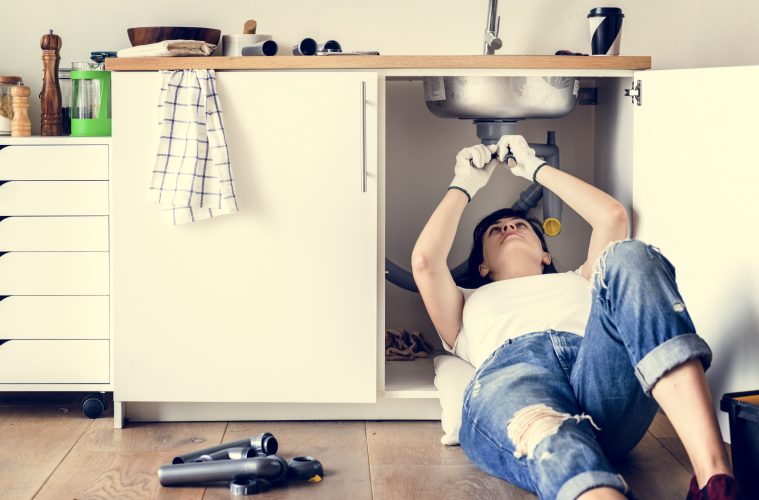The home is one of the most important places in life. It’s the peaceful antidote to a hard days work, and where your family likely lives. But to truly relax, everything must be in full working order. When this is not the case, repairs and maintenance are costly. Some things do require professional help, but others can be done yourself. We would always suggest any home improvement enthusiast only undertakes what they are comfortable with and correctly researches prior to doing any DIY.
Fix a leaky pipe
These usually occur under bathroom and kitchen sinks. Prior to fixing you should turn the main supply off at the mains, and drain all excess water. Ensure you place a suitably sized bucket under the pipe and open the compression nuts. You may want to take the opportunity to clean out the curved tube (called a P-trap). Once you replace the washer, you can screw it back in and turn the water on to test for leaks before removing the bucket.
A running toilet
Running toilets can be waste of water and the sound of running water can cause a few sleepless nights. It’s an easy issue to fix, and is likely the flapper which doesn’t seal so is not working correctly causing a constant stream of water into the bowl. To replace it you will have to stop the water supply valve located under the toilet. If the valve is leaking, you should shut off the mains supply. After that, flush the toilet to drain the water, detach the broken flapper and exchange it with a substitute of the same type. Follow the instructions from the package. Eventually, hook the flapper chain to the lever arm, so there is slack when you close the flapper. And it’s done!
Boiler repair
Whenever you face any problem with the boiler, it may seem daunting but some things can be fixed. First of all, make sure that the boiler is turned off. Afterwards, check the water pressure indicator. If it is lower than one, it means that the pressure is too low. In this case, you have to find the filling loop. It usually is located at the bottom of the unit. Next, open the valves, and you’ll hear the water fill up the system. When water pressure pointer reaches the value of 1,5, you can close the lid and switch on the boiler.
Bleeding radiators in your home may help too. When the heating is working check all heaters in your home and evaluate if there are cold ones. Start by checking the radiator furthest from the boiler. If one of them is not hot to the touch all over, find a radiator key or flathead screwdriver. Hold an old rag under the valve in case of water leakage, open the valve and carefully let the gas escape. If you can’t hear hissing sound anymore, that means you can close the valve.
Home improvement isn’t that difficult when you understand what the problem is and how to find a solution. However, there are plumbing activities you shouldn’t do because they can be dangerous or create more problems. Knowing your boundaries and limitations is very important, and implementing central heating systems, serious repairs and major installations may require a professional London plumbing company.
Damaged flooring
Flood damage or wear and tear can leave the bathroom floor bowed or bubbled. If the flooring was vinyl, you will be able to cut out the damaged area and replace it. If you can’t find the same tile, you may be able to colour match or at worst replacing the whole floor may be required. We’d always recommend proper bathroom vinyl to limit water damage.

